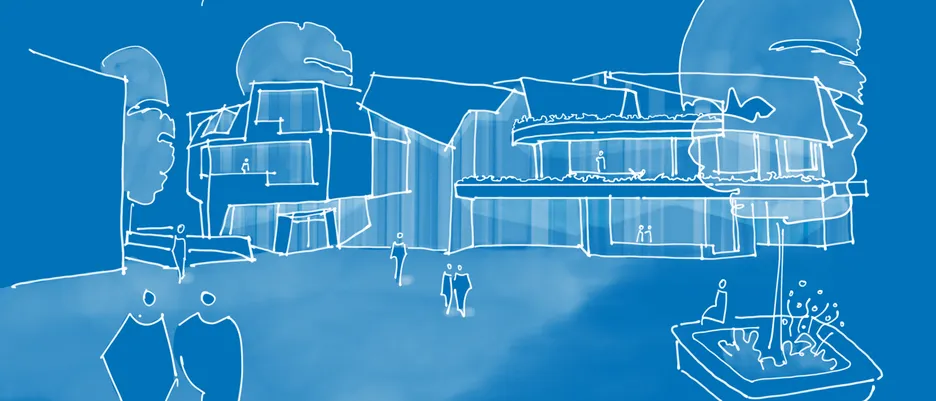
Development of exemplary new construction methods for the Waldofschule Uhlandshöhe in Stuttgart on a basis of measurements and analysis in new school buildings
Due to the progression of climate change political decision-makers keep issuing stricter requirements for the reduction of CO2 emissions. In the building sector all new buildings will have to be nearly-zero-energy buildings from 2021. This means that a building will need to have a high overall energy performance and primarily cover its low energy demand from renewable sources. Thus these requirements also apply for school buildings. Schools are not only built when municipalities have a population growth and have to take in a rising number of students. Reasons may also be a higher and more flexible space requirement due to new innovative teaching concepts as well as merging several schools in one site or because existing school buildings cannot be renovated.
Also on the campus of the Waldorf school society in Stuttgart a new school building is to be developed. It replaces two existing buildings as the available space is no longer sufficient for the higher requirements of all-day care. The aim for the new building is to erect this as a nearly-zero-energy building. Therefore a lower energy demand is pursued that will mainly be covered with renewable energies as well as the answer to the problem of the implemented grey energy regarding the used materials and the creation of comfortable room qualities for the students. These improvements in the indoor climate can be easily accomplished with current technological solutions. Nevertheless the question arises, whether the highly technological concept is the ideal solution or if intelligent renovation with simple technology can also achieve the desired comfort requirements in the sense of “simple building”. A reduced technological concept that equally decreases the investment and the running costs is not only an important point for the Waldorf school society but also for all other school authorities.
To meet the high requirements concerning energy efficiency, the use of materials and the indoor quality for the new building of the Waldorf school, suitable measures need to be developed. In the process the view will be expanded to other newly built schools: at least five representative exemplary schools will be analyzed comprehensively to evaluate the implemented solutions and to draw conclusions for the new building for the Waldorf school. Further general recommendations shall be developed and be provided for decision-makers for future new school buildings. The developed recommendations for action that lead to higher energy efficiency and raised indoor comfort while also leading to reduced running costs, ensure the transfer to other new school buildings due to the high representative nature of the examined schools.